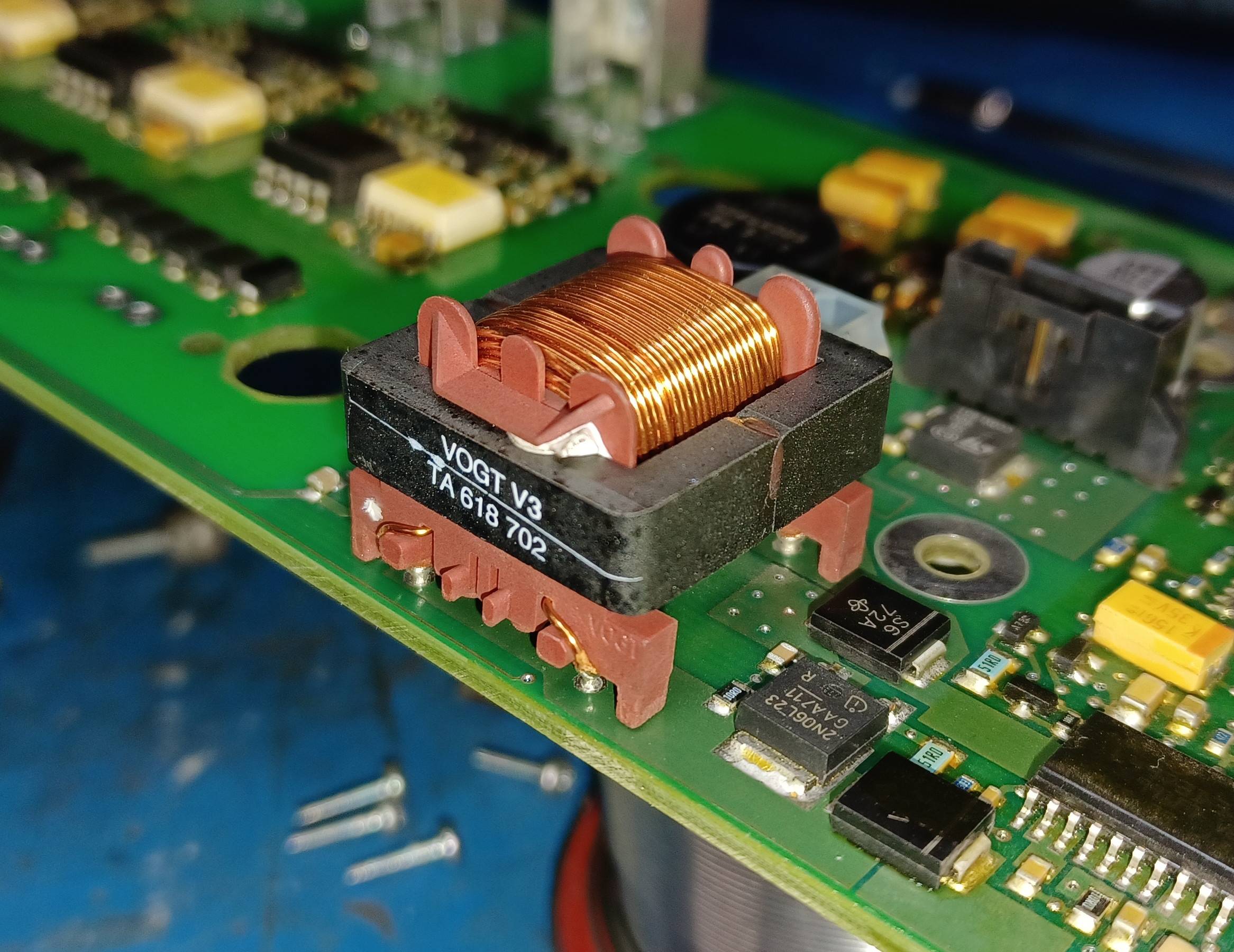Here, two "E" cores are bonded together with brown epoxy. There isn't any intentional, visible gap, yet there are three bond points and that must introduce some gap...
How are these considered: gap or no gap?
Edit: There is no visible gap on the outer legs - if you zoom in, the halves are very close. But "no visible" could still be 0.005mm, so right there is 0.015mm. This particular coupled inductor has not been disassembled to determine if an actual gap was cut into the center leg; lets assume all legs are equal in length.

